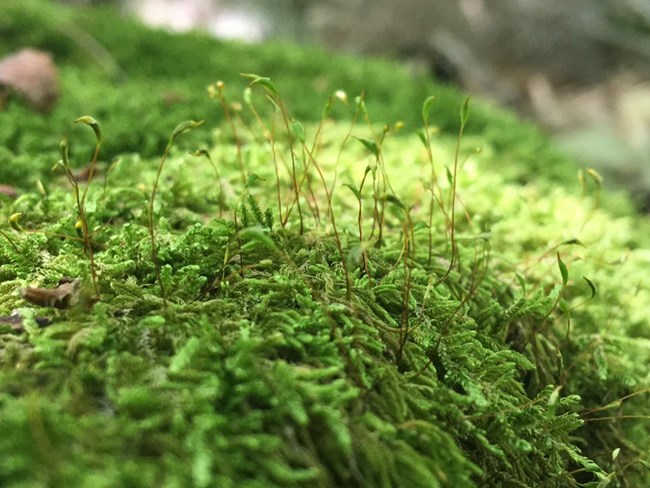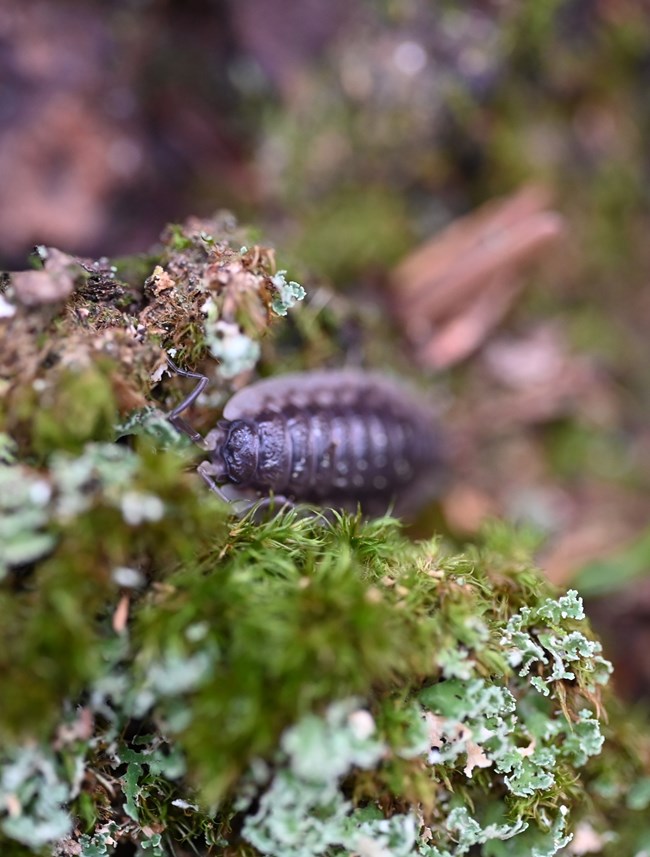
NPS Spongy, Fragile CarpetsGo for a hike almost anywhere in Acadia National Park and you’re sure to see an often overlooked, yet important part of the Acadian ecosystem – mosses. CharacteristicsLook closely at a bed of moss and you’ll start to see an entirely new world opening up. The interesting and unique shapes of mosses let us imagine a planet with strange trees dominating the landscape. Mosses provide habitat for insects and other small creatures. Look for any length of time and you’re bound to find spiders and other invertebrates hiding among the moss. With the aid of a microscope, you’ll be able to find one of the common moss-residents, the tardigrade (commonly known as water bears or moss piglets). But what exactly makes a moss a moss? How does moss reproduce?Mosses reproduce in an unusual way. Unlike many other plants, mosses do not reproduce with seeds. Instead, they reproduce with spores, like fungi or ferns. Looking closely at mosses, one can see the sporophyte, with its capsule containing spores for reproduction. 
NPS Photo by Jack Byrley What role does moss play in the ecosystem?Moss is a very important part of the forest ecosystems in Acadia National Park. Moss is great at retaining water after rainfall, and when things dry out, moss provides extra moisture that it slowly releases into the ecosystem. Moss also contributes to stabilizing soil. It reduces soil erosion in areas where it grows. How can we protect mosses?Though mosses are abundant in Acadia National Park, they are also quite fragile. Whenever possible, avoid stepping on moss or other vegetation. Instead, stay on trails or walk along durable surfaces like rocks and sand. What is Liverwort?Liverwort, like moss, is a non-vascular plant. Acadia is home to several species of liverwort- some resemble moss with tiny leaves, while others have a flat, papery appearance. Liverwort may reproduce either asexually or with the aid of spores. It can be found growing in damp environments on soil, bark, or rock. It aids in decomposition. |
Last updated: September 28, 2023
